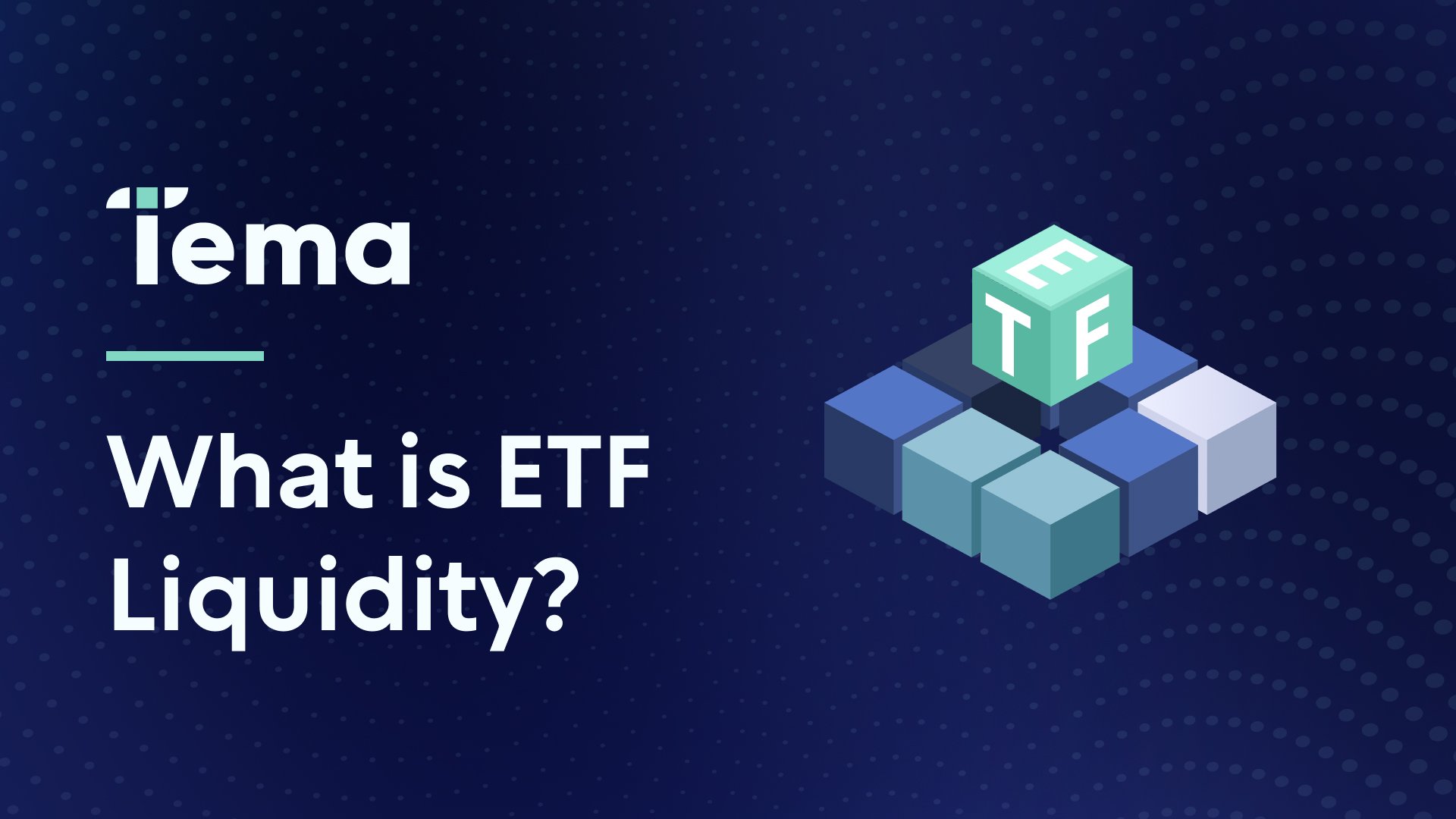By clicking below you acknowledge that you are navigating away from temaetfs.com and will be connected to temafunds. Tema Global Limited manages both domains. Please take note of Tema's privacy policy, terms of use, and disclosures that may vary between sites.
Healthcare sector rebounded in 2025, leading to a promising 2026 with significant growth potential and innovation in the biotech industry.
Learn how to invested in the S&P 500 with reduced concentration risk, with innovative strategies like Tema's S&P 500 Historical Weight ETF Strategy (DSPY).
Explore how investing in alternative manager equity can offer liquidity and diversification advantages over direct private market allocations.
Discover emerging investment opportunities in chronic disease management and how companies are shifting to holistic treatments for lasting impact.
Insights from Q3 2025 earnings calls on how reshoring and US manufacturing trends are impacting companies like Cognex, Caterpillar, and Eaton.
Discover how to find durable quality investments in the financial sector and achieve a balance between growth and resilience.
Discover how to prudently invest in the nuclear renaissance amid rising power demands and technological advancements in nuclear energy.
Explore how AI's rapid growth is transforming global electrification and driving significant investments in power infrastructure, reshaping the future of energy consumption.
Explore how the democratization of alternative assets is transforming private markets and expanding investment opportunities for private wealth and 401(k) plans.
Trump's deal with Pfizer on drug pricing marks a significant shift in healthcare policy, potentially boosting the sector's performance and encouraging biopharma investments in the US.
Discover how quality equities perform in bull markets and explore their long-term resilience, even during uncertain times, with insights from Tema ETFs.
Discover how Newell, Amkor, Hyundai, and Eli Lilly are driving the U.S. reshoring movement with significant investments in manufacturing and job creation.
Capitalize on AI innovations, reduced regulations, & other factors offering long-term potential. Learn why it may be the time to invest in healthcare.
Discover the rising momentum in non-residential construction and its impact on reshoring efforts, as highlighted by the latest Dodge Momentum Index report.
Record-breaking power auction prices highlight urgent need for more electrification investments to meet rising demand and improve grid infrastructure.
Learn how investing in quality companies with durable moats can offer resilience and long-term outperformance during times of market uncertainty.
Explore the benefits of investing in high-quality international stocks focusing on long-term sustainability & competitive advantages with Tema's ITOL ETF,
Digital assets i.e. crypto currencies continue to expand. Through price appreciation, new use cases, and institutionalization, digital assets are a growing part of the financial system.
Indispensable businesses provide mission-critical products. Learn why these companies are resilient, high-quality, and potentially strong investments.
Explore the resurgence of Made in America through reshoring, evolving trade policies, and electrification, unlocking investment opportunities in critical industries poised for growth.
Reduce S&P 500 concentration risk. Discover how DSPY’s historical-weight approach balances exposure, lowers single-stock risk, and preserves index core.
Explore the impact of Trump's tariffs on reshoring, manufacturing, and the reshaping of the US economy in this insightful analysis by Chris Semenuk.
AI is revolutionizing cancer drug discovery, but progress is slow. Discover the latest advancements and upcoming breakthroughs from leading AI.
Tema Monopolies and Oligopolies ETF (TOLL) , a fund investing in durable, tangible and dominant moat equities could act as a real asset.
Explore the electrification megacycle's $7 trillion opportunity, driven by AI, EVs, and reindustrialization through Tema Electrification ETF (VOLT).
Exploring the shift from injectable to oral obesity medications and their potential to revolutionize weight loss treatments for broader market appeal and better patient convenience.
Discover how state level reshoring is transforming manufacturing in the U.S. with major investments in states like Arizona, Texas, New York, and Indiana.
Discover how family offices can utilize ETFs to manage tax and concentration concerns in their portfolios while maximizing diversification.
Reshoring to the US offers better supply chain security compared to nearshoring, which poses significant geopolitical and economic risks.
Discover a new approach to investing by focusing on durable, tangible, and dominant moats for long-term stock performance.
Discover key differences between ETFs & mutual funds. Learn what ETFs & mutual funds are, to decide which is better for your investment strategy.
Rising cancer rates among young adults demand better early detection. Blood-based screenings like Guardant's Shield offer hope.
Learn what ETF liquidity is, why it matters, and how it affects trading. Discover factors influencing liquidity and how it impacts your investment returns.
Learn why pricing is not a risk to the GLP-1 market opportunity. Discover the justified cost of weight loss drugs and their significant clinical benefits.
How big is the weight loss industry and how can you identify the risks and opportunities in this market
Discover key insights from ASCO 2024, showcasing advancements in oncology therapeutics and diagnostics. Explore trends in ADCs, genomic profiling, immuno-oncology, targeted agents, and emerging modalities.
Discover Tema GLP-1, Obesity & Cardiometabolic ETF, the world's first ETF investing in GLP-1 for obesity and cardiometabolic diseases.
Tema ETFs with Prof. Jens Juul Holst joining as a Scientific Advisor, bringing groundbreaking research in obesity and diabetes treatment.
Discover the importance of active management in investing in obesity and cardiometabolic trends, navigating risks and opportunities of the industry.
Explore the latest weight loss drug stocks with 10 new obesity medications, targeting GLP-1 alternatives, muscle sparing, and better tolerability.
Discover our approach to generating investment ideas by defining a strategic universe, refining research sets, and sparking creativity for robust portfolio opportunities.
Position your portfolio strategically for the upcoming US election by considering sector focus risks and foreign market investments.
Discover the potential of immuno-oncology's second act with new approaches and targets like TIGIT and LAG3. These advancements revolutionize cancer treatment.
Discover how radiopharmaceuticals are revolutionizing cancer care and how to invest in them.
Read about the market trends and outlook for 2024 in this CIO update.
Revolutionize cancer treatment with cell therapies. Discover the potential impact on multiple myeloma and the growing oncology cell therapy market.
Learn about Tema’s active investment process, combining fundamental analysis and systematic strategies to optimize portfolios and manage risks effectively.
Discover how artificial intelligence is disrupting the market and why data moats are becoming crucial for information service businesses.
Discover the next generation of cardiovascular drugs and their potential to revolutionize the treatment of cardiovascular disease.
Private sector companies are making independent decisions to reshore manufacturing operations as companies navigate global risks and supply chain stress.
Discover how liquid biopsies are revolutionizing cancer diagnosis and changing the landscape of cancer detection.
Discover how to assess the valuation case for potential investments and the various approaches used to determine stock value.
Learn about security selection in investing and how to generate alpha by selecting the right stocks through fundamental research.
Gain insights into the reshoring phenomenon and its impact on infrastructure, manufacturing and supply chain.
Discover the latest trends and opportunities in the field of oncology investing.
Explore the competitive landscape of the technology sector and whether it can lead to monopolies.
Cardiovascular and Metabolic ETF (HRTS) is a unique investment opportunity in the healthcare sector focused on obesity, diabetes, cardiovascular diseases.
Obesity ETF: A unique investment opportunity in the biotech and healthcare sector focused on obesity, diabetes, cardiovascular diseases.
Learn about informational, analytical, and behavioral edges in the investment process.
Discover the exciting investment opportunities and challenges in cancer therapeutics and research in our latest webinar replay and research report.
Learn how Tema implements multi-layered risk management in investing risk management strategies to enhance investment outcomes.
Discover the optimal portfolio construction process to maximize alpha and avoid losses. Learn about position sizing, and portfolio management strategies.
Learn why a strong operating base is crucial for company success. Explore factors like product positioning, R&D, management, location, and business model.
Investing in oncology: a biotech revolution in research, diagnosis, and treatment of cancer.
Tema ETFs (“Tema”) launches the Tema Oncology ETF (CANC), the first actively managed ETF listed in the United States seeking to provide long-term growth.
Understanding the importance of balance sheets and cash flow-driven investing, the risks of weak financial metrics, the potential for value impairment.
Overcome performance anxiety in thematic ETFs by focusing on purity of exposure.
Learn about the reshoring megatrend and how American manufacturing is being revitalized. Discover how you can invest in reshoring with the Tema American Reshoring ETF (RSHO).
Learn how thematic investing targets long-term trends to drive growth and diversify portfolios. Discover strategies for identifying key investment themes.
Discover the benefits of investing in monopolies and moat-like businesses. Learn how to identify firms with strong barriers to entry for long-term returns.
Explore how reshoring could impact the US economy and drive investment opportunities
No results found


 Back
Back














.jpg)

.jpg)










.jpg)













